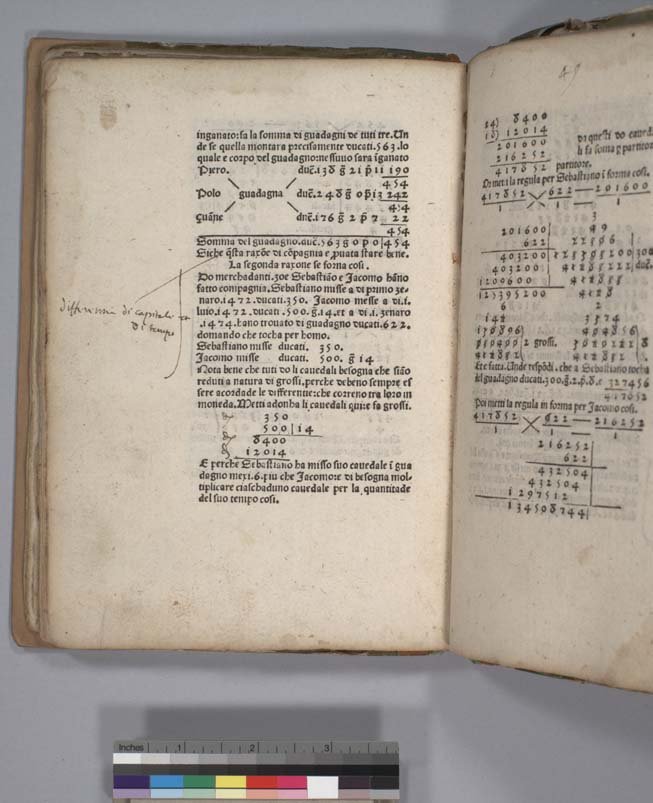- About MAA
- Membership
- MAA Publications
- Periodicals
- Blogs
- MAA Book Series
- MAA Press (an imprint of the AMS)
- MAA Notes
- MAA Reviews
- Mathematical Communication
- Information for Libraries
- Author Resources
- Advertise with MAA
- Meetings
- Competitions
- Programs
- Communities
- MAA Sections
- SIGMAA
- MAA Connect
- Students
- MAA Awards
- Awards Booklets
- Writing Awards
- Teaching Awards
- Service Awards
- Research Awards
- Lecture Awards
- Putnam Competition Individual and Team Winners
- D. E. Shaw Group AMC 8 Awards & Certificates
- Maryam Mirzakhani AMC 10 A Awards & Certificates
- Two Sigma AMC 10 B Awards & Certificates
- Jane Street AMC 12 A Awards & Certificates
- Akamai AMC 12 B Awards & Certificates
- High School Teachers
- News
You are here
Mathematical Treasures - The Treviso Arithmetic

This is a page from the Treviso Arithmetic (1478), the earliest known example of a printed book on arithmetic. The work has no title, and no author's name is found anywhere in the book. It was printed in Treviso, a town about 26 km northwest of Venice. In many book catalogues, it is called the Arte del Abbaco (Art of Calculation), because it demonstrates not only how to use the Hindu-Arabic decimal place-value system, but how to solve numerous practical problems, mostly using the rule of three. The problem that begins in the middle of the left-hand page of this illustration is the following:
Two merchants, Sebastiano and Jacomo, enter into partnership. Sebastiano put in 350 ducats on the first day of January, 1472; Jacomo put in 500 ducats, 14 grossi on the first day of July, 1472. On the first day of January, 1474 they find that they have gained 622 ducats. Required is the share of each.
The first calculation for this problem, toward the bottom of the page, converts both amounts of money into grossi, given that there are 24 grossi in a ducat. The next instruction is to multiply each partner's amount by the length of time it was invested; so on the next page, Sebastiano's amount is multiplied by 24 and Jacomo's by 18.
A complete translation and analysis of the Treviso Arithmetic can be found in Frank Swetz, Capitalism and Arithmetic: The New Math of the 15th Century (La Salle, IL: Open Court, 1987). For further information on the Treviso Arithmetic, click here.
Frank J. Swetz and Victor J. Katz, "Mathematical Treasures - The Treviso Arithmetic," Convergence (January 2011)




